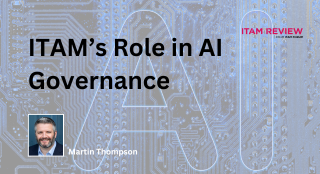Cloud accounting changes on the horizon

Cloud computing continues to grow and bring benefits across a range of business sectors but, at the same time, it can represent challenges for the finance/accounting departments and ultimately, the CFO. How you pay for cloud is a big consideration for many organisations – there are several financial considerations that must be tackled whenever cloud is an option and how you divide the spend between your CAPEX and OPEX budgets is one of them.
What’s changed?
In late 2018, the Financial Accounting Standards Board (FASB) – the organisation responsible for setting public company accounting standards and establishing GAAP (Generally Accepted Accounting Principles) in the US – issued new guidance around accounting for implementation, set-up, and other up-front costs related to cloud projects. Under the new regulations, organisations will be able to capitalize certain cloud implementation costs in the same as they would for on-premises software. The changes begin in 2020 for “public business entities” and in 2021 for all other entities.
Generally, anything to do with cloud computing has been an OPEX expense which reduces the EBITDA (Earnings Before Interest, Tax, Depreciation, and Amortisation) of a company. This new guidance allows some of the costs involved with cloud to be capitalised and recognised over the lifetime of the service, reducing the immediate impact on EBITDA. Understanding your organisation’s views around accounting preferences and the need to protect EBITDA etc. can influence cloud related discussions with vendors.
Helping the CFO
The CFO will be making decisions about how cloud impacts earnings and tax and having a clear picture of your software position regarding cloud – what can move there, what can’t, etc. will help them ensure they have all the facts when considering the possible impact of cloud and other software decisions.
Being able to give the CFO (and other execs) a complete and current view of your cloud usage – and how it relates to your software licensing position – is very important. To ensure compliance with accounting regulations, there needs to be a clear picture of things like:
- Which are standalone services
- Which include licenses
- Where on-premises licenses have been moved to the cloud
And when these positions change too. Costs are generally split out between on-premises, cloud, internal, third-party etc. and any changes may impact the accounting – positively or negatively.
What can ITAM do?
Whether these FASB changes apply in your territory or not, correct accounting around cloud is important – and ITAM is well placed to be pivotal in these conversations and decisions. Knowing where assets are (on-premises, the cloud, dedicated third party etc.), what they are (perpetual license, IaaS, SaaS etc.), and how they can be used is all key to helping an organisation make the appropriate decisions. Using the data that you have and pro-actively taking it to the different parts of the business is a great way to enhance ITAM’s position internally. Don’t forget, software compliance isn’t the only type of audit an organisation might face!
Further Reading
PWC blog post
PWC guide
CFO article
FASB Guidance
Can’t find what you’re looking for?
More from ITAM News & Analysis
-
Broadcom vs Siemens AG - A Brewing Storm
The ongoing legal battle between VMware (under Broadcom ownership) and Siemens is yet another example of why ITAM goes far beyond license compliance and SAM. What might, at first glance, appear to be a licensing dispute, ... -
Shifting Left Together: Embedding ITAM into FinOps Culture
During one of the keynotes at the FinOps X conference in San Diego, JR Storment, Executive Director of the FinOps Foundation, interviewed a senior executive from Salesforce. They discussed the idea of combining the roles of ... -
Addressing the SaaS Data Gap in FinOps FOCUS 2.1
I recently reported on the FinOps Foundation’s inclusion of SaaS and Datacenter in its expanded Cloud+ scope. At that time, I highlighted concerns about getting the myriad SaaS companies to supply FOCUS-compliant billing data. A couple ...
Podcast
ITAM training
Similar Posts
-
The M&S Cyberattack: How IT Asset Management Can Make or Break Your Recovery
Marks & Spencer (M&S), the iconic UK retailer, recently became the latest high-profile victim of a devastating cyberattack. Fellow retailers The Co-Op and Harrods were also attacked. Recent reports suggest the rapid action at the Co-Op ... -
AI in ITAM: Insightful Signals from the Front Line
During our Wisdom Unplugged USA event in New York in March 2025, we engaged ITAM professionals with three targeted polling questions to uncover their current thinking on Artificial Intelligence—what concerns them, where they see opportunity, and ... -
How ISO/IEC 19770-1 Can Help Meet FFIEC Requirements
In the world of ITAM, the regulatory spotlight continues to intensify, especially for financial institutions facing increasing scrutiny from regulatory bodies due to the growing importance of IT in operational resilience, service delivery, and risk management. ... -
An Introduction to Scope 4 Emissions
Executive Summary For ITAM teams, sustainability is a core responsibility and opportunity. Managing hardware, software, and cloud resources now comes with the ability to track, reduce, and report carbon emissions. Understanding emission scopes—from direct operational emissions ...




